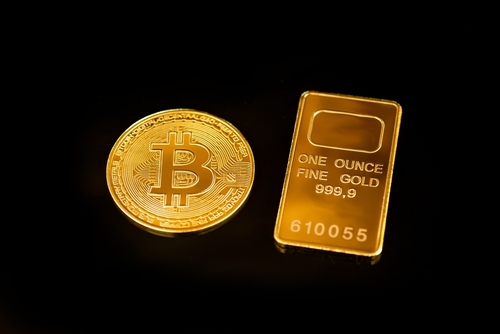USD/INR flattens as investors seek fresh cues on US-India trade deal

- The Indian Rupee has been consolidating around 89.00 against the US Dollar for almost two weeks.
- FIIs turned out to be buyers in the Indian stock market on Tuesday.
- US President Trump warns of eliminating welfare programs and job cuts amid the government shutdown.
The Indian Rupee (INR) opens on a flat note again around 88.90 against the US Dollar (USD) on Wednesday. The USD/INR pair has been trading in a confined range of 20 paise for almost two weeks between 88.79 and the all-time high of 89.12, with investors seeking fresh cues on when India and the United States (US) will reach a trade agreement.
The Indian currency has been under immense pressure as the US is charging 50% tariffs on imports from India. Washington raised duties on imports from New Delhi by 25% for buying Oil from Russia.
This weekend, External Affairs Minister Subrahmanyam Jaishankar said in a speech that both nations are struggling to reach a consensus as major economic issues with the US are yet to be resolved. However, he didn’t clarify those issues and signaled a likely timeframe in which both nations will announce a trade pact.
Ongoing trade tensions between the US and India have remained a major drag on the sentiment of overseas investors towards the Indian stock market. In the July-September period, Foreign Institutional Investors (FIIs) have sold equity shares worth Rs. 1,29,870.96 crores in the Indian stock market. However, FIIs turned out to be buyers on Tuesday and bought shares worth Rs. 1,440.66 crores.
Domestically, the Reserve Bank of India (RBI) on Tuesday proposed changes to the way banks assign risk weightage to loans and the so-called expected credit loss (ECL) framework, Reuters reported. The RBI stated that the changes proposed, which aim to align domestic regulations with global norms, will have a positive impact on banks’ minimum regulatory capital requirements.
Daily digest market movers: US Dollar Index posts a fresh two-month high near 98.85
- The Indian Rupee continues to hold its all-time low against the US Dollar at around 89.10, even as the latter strengthens amid the US government shutdown. At the press time, the US Dollar Index (DXY), which tracks the Greenback’s value against six major currencies, trades 0.3% higher to near 98.85, the highest level seen in two months.
- The US Dollar gains as its safe-haven demand has increased, with investors remaining cautious that the closure of federal agencies could lead to significant cuts in spending programs and mass lay-offs.
- On Tuesday, US President Donald Trump announced that the White House could eliminate a string of government plans amid ongoing government closure and would provide details on laying off employees in the next four or five days, Reuters reported. Such a scenario would be unfavourable for the US economic growth and allow Federal Reserve (Fed) officials to turn dovish on the monetary policy outlook.
- Currently, traders see an 82% chance that the Fed will cut interest rates by 25 basis points (bps) in each of its two policy meetings remaining this year, according to the CME FedWatch tool.
- For fresh cues on the monetary policy outlook, investors await Federal Open Market Committee (FOMC) minutes of the September meeting, which will be published at 18:00 GMT. Last month, the Fed delivered its first interest rate cut of the current financial year and reduced policy rates by 25 bps to 4.00%-4.25%. The Fed stated that the monetary policy adjustment became appropriate amid cracks in the job market, with the impact of tariffs on inflation remaining limited.
Technical Analysis: USD/INR remains sideways around 89.00
USD/INR stays in a tight range near the all-time high of 89.10 for almost two weeks. The near-term trend of the pair remains bullish as the 20-day Exponential Moving Average (EMA) slopes higher around 88.62.
The 14-day Relative Strength Index (RSI) stays above 60.00, suggesting a strong bullish momentum.
Looking down, the pair could slide to near the September 12 high of 88.57 and the 20-day EMA, if it breaks below the September 25 low of 88.76.
On the upside, the pair could extend a rally towards the round figure of 90.00 if it breaks above the current all-time high of 89.12.
Indian Rupee FAQs
The Indian Rupee (INR) is one of the most sensitive currencies to external factors. The price of Crude Oil (the country is highly dependent on imported Oil), the value of the US Dollar – most trade is conducted in USD – and the level of foreign investment, are all influential. Direct intervention by the Reserve Bank of India (RBI) in FX markets to keep the exchange rate stable, as well as the level of interest rates set by the RBI, are further major influencing factors on the Rupee.
The Reserve Bank of India (RBI) actively intervenes in forex markets to maintain a stable exchange rate, to help facilitate trade. In addition, the RBI tries to maintain the inflation rate at its 4% target by adjusting interest rates. Higher interest rates usually strengthen the Rupee. This is due to the role of the ‘carry trade’ in which investors borrow in countries with lower interest rates so as to place their money in countries’ offering relatively higher interest rates and profit from the difference.
Macroeconomic factors that influence the value of the Rupee include inflation, interest rates, the economic growth rate (GDP), the balance of trade, and inflows from foreign investment. A higher growth rate can lead to more overseas investment, pushing up demand for the Rupee. A less negative balance of trade will eventually lead to a stronger Rupee. Higher interest rates, especially real rates (interest rates less inflation) are also positive for the Rupee. A risk-on environment can lead to greater inflows of Foreign Direct and Indirect Investment (FDI and FII), which also benefit the Rupee.
Higher inflation, particularly, if it is comparatively higher than India’s peers, is generally negative for the currency as it reflects devaluation through oversupply. Inflation also increases the cost of exports, leading to more Rupees being sold to purchase foreign imports, which is Rupee-negative. At the same time, higher inflation usually leads to the Reserve Bank of India (RBI) raising interest rates and this can be positive for the Rupee, due to increased demand from international investors. The opposite effect is true of lower inflation.







